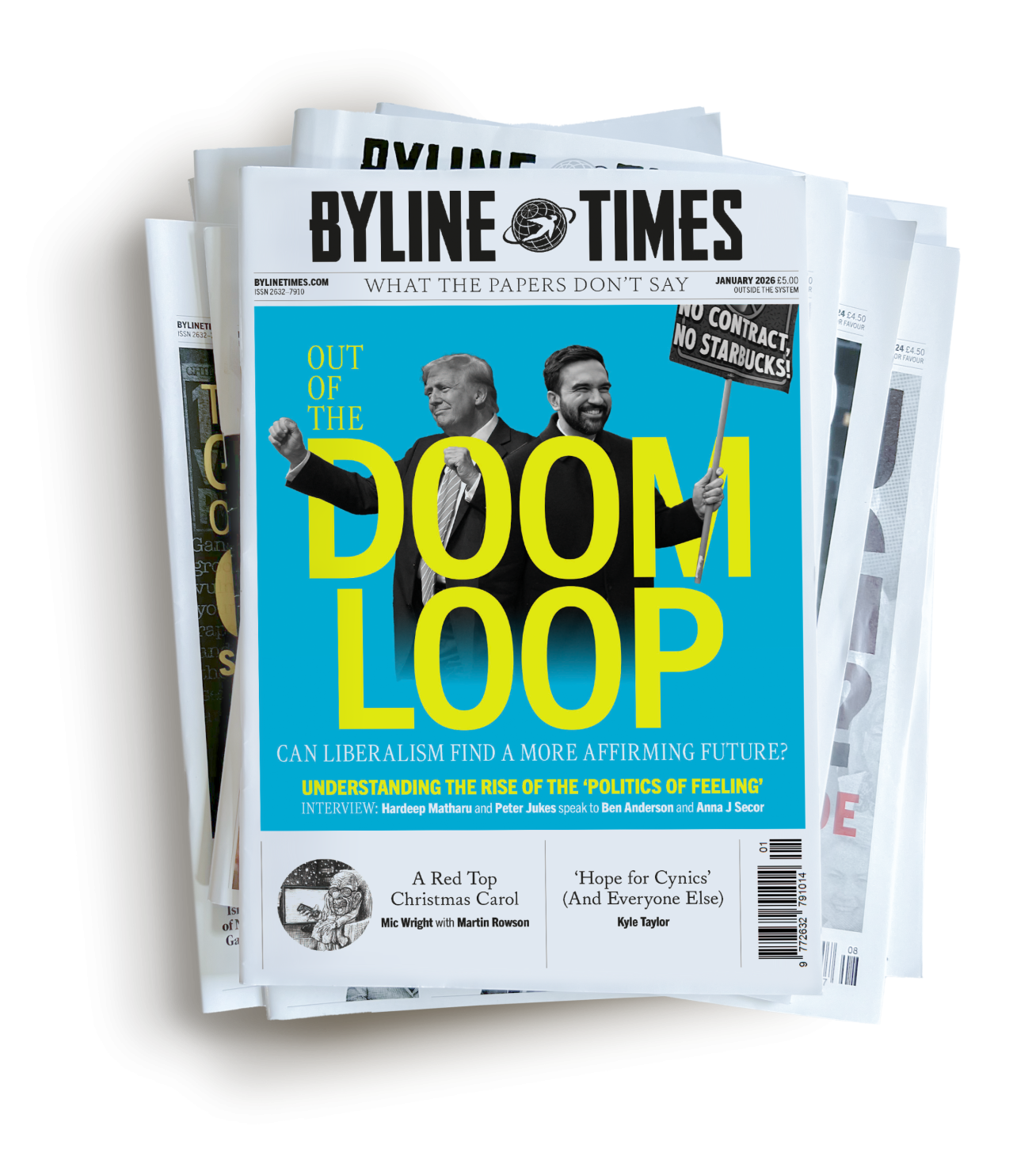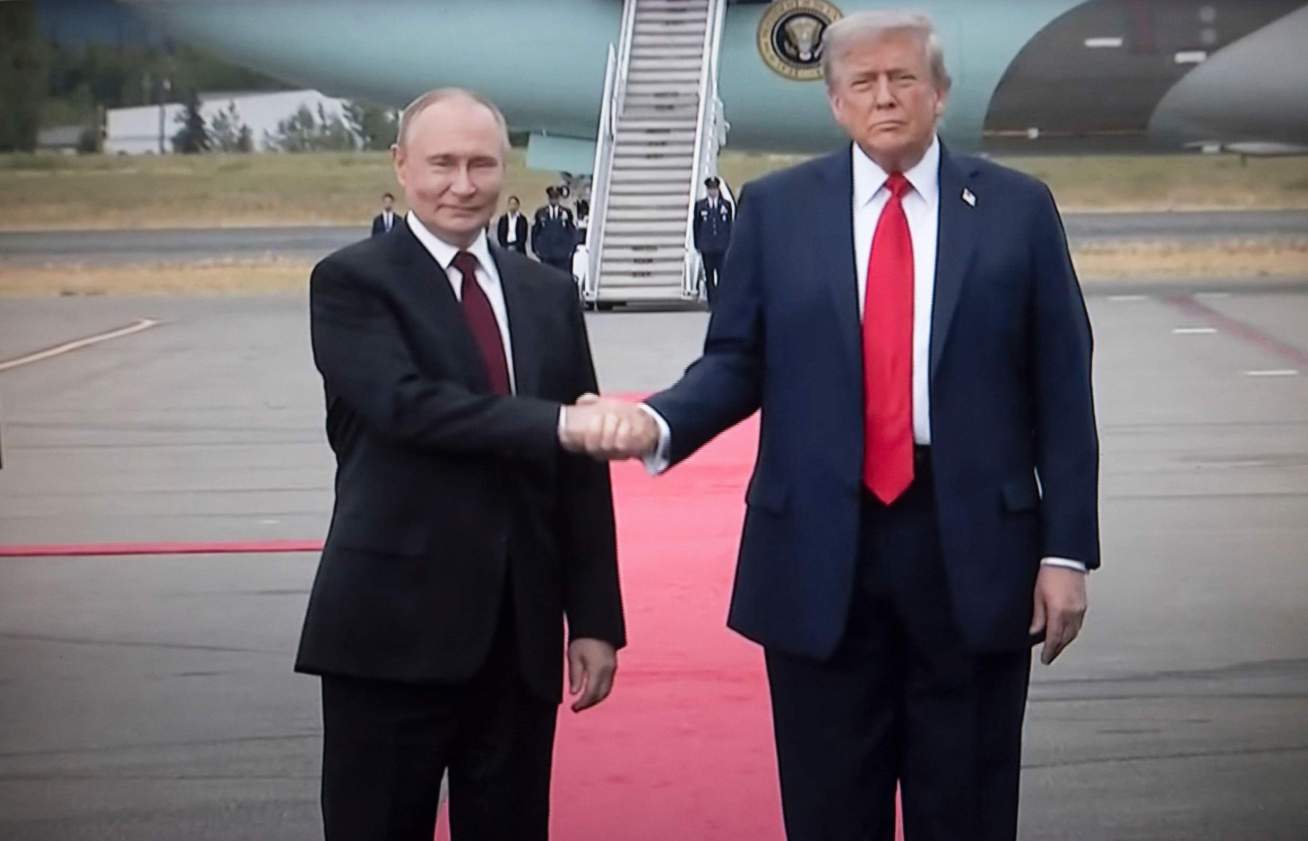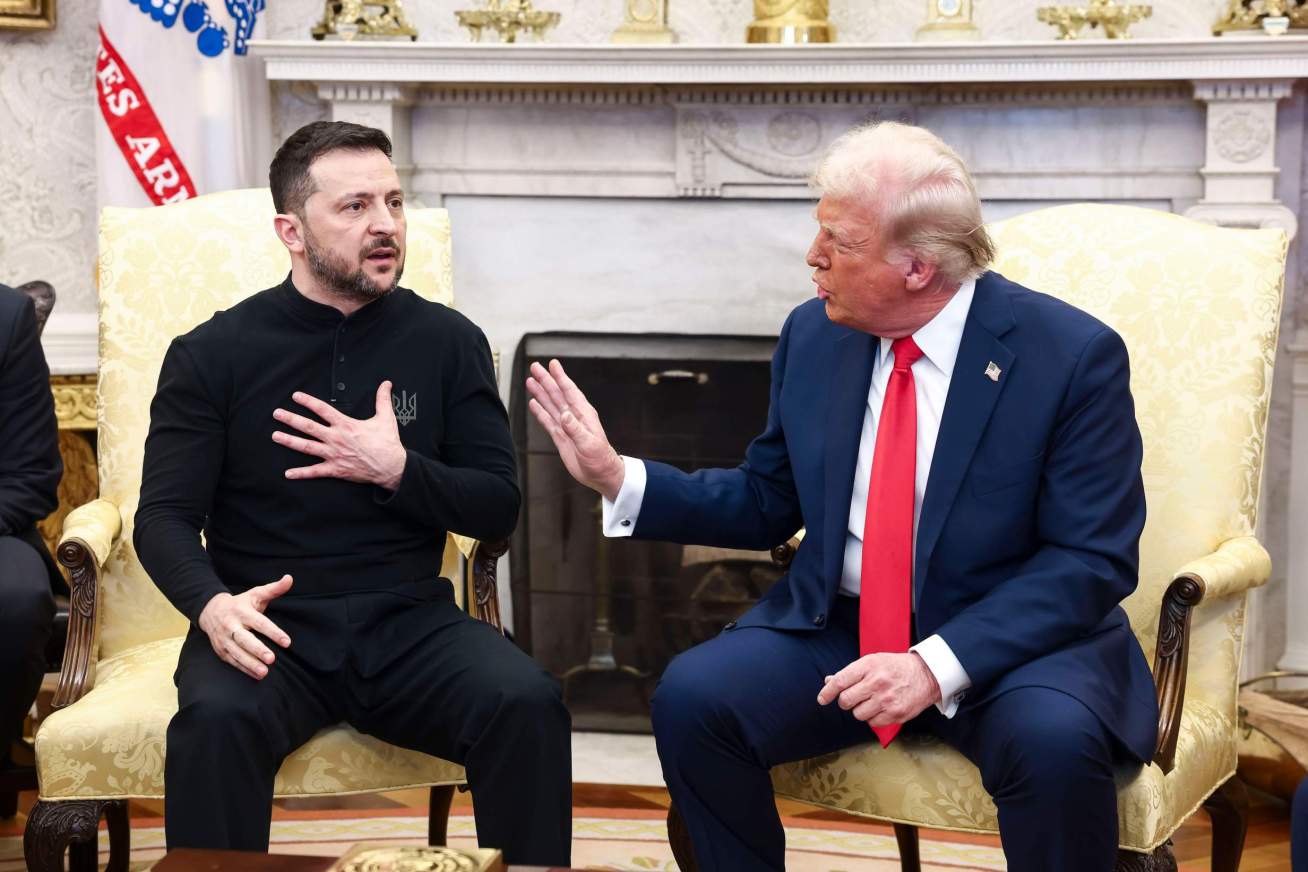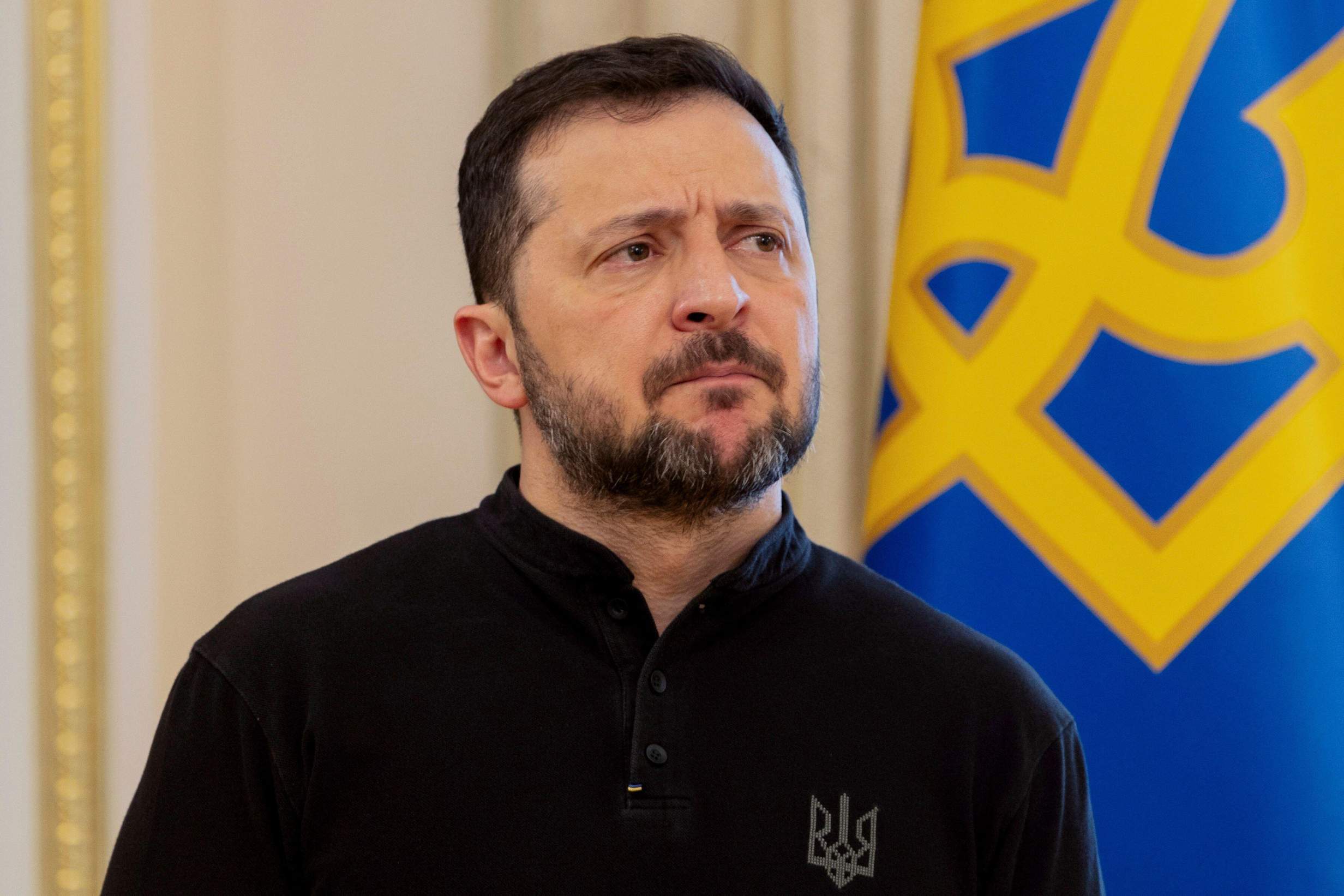
Read our Digital & Print Editions
And support our mission to provide fearless stories about and outside the media system
Vladimir Putin’s aim is restore the USSR and dominate Europe – Ukraine is but a step along the way
Putin’s invasion of Ukraine caused European populist parties to row back on previously sympathetic attitudes to the Kremlin. As Donald Trump and Putin’s aim of forcing Volodymyr Zelensky to cede 20% of Ukraine to Russia gets nearer achievement, expect Putin apologists to argue that Zelensky could have avoided the war by abandoning his NATO ambitions.
Nobody should believe them.

President Zelensky’s aim to join NATO figured in the run-up to the invasion of Ukraine in 2022, and Russia had demanded that NATO allies sign a treaty ruling out any new members and naming Ukraine in particular, but it is absurd to claim that Ukraine was invaded to prevent it joining the alliance.
In response to the invasion of Ukraine, Finland and Sweden applied for NATO membership. Finland borders on Russia both by land and sea, and Sweden has a maritime border with Russia in the Baltic sea. But after an initially aggressive response, Putin said he saw no problem with these countries joining NATO.
The Moscow line that expanding NATO is an assault on Russia’s essential security interests has no corollary that countries which spurn NATO will be safe from Russian subversion or invasion. The nations at risk from Putin are at risk because of Putin’s imperial ambitions in Europe, and will find no safety in declarations of neutrality or rejection of the EU or NATO.
Putin’s invasion of Ukraine in 2022 picked up where the annexation of Crimea left off in 2014 – reuniting Ukraine with Russia, and seeking to rebuild the USSR which had been dismembered after the fall of the Berlin wall, and humiliated by NATO.
Putin believes that Russians and Ukrainians – and Belarusians too, for that matter – are one people, which is part of the explanation for his attempts to take over Ukraine. Another key part, is his belief in their shared destiny as heirs to the legacy of Imperial Russia and to its more recent manifestation in the USSR. That legacy calls for the Russian family of nations to regain the power and prestige they once enjoyed in Europe and the world.
When Putin joined the KGB in 1975, the USSR’s 15 Republics had a population of 250 million. It was a co-equal superpower to the US and outstripped China economically and militarily. Its military and economic position in Europe was reinforced by eastern European puppet states linked militarily to the USSR through the Warsaw Pact, and linked economically through Comecon.
The USSR was a global superpower with a European empire.
It was at a high point in Putin’s career that all that was to change. The USSR lost control of the Warsaw Pact countries, and at the same time the USS fell apart, losing a quarter of its territory and nearly half its population.
Russia stepped into the shoes of the USSR, and fourteen other independent republics emerged, including Ukraine, the Baltic states (Estonia, Latvia and Lithuania), Georgia, Moldova, and the central Asian republics of Uzbekistan and Kazakhstan. Not just the USSR had disappeared, but much of the family of nations that had been imperial Russia.
Putin does not put this down to inevitable geopolitical evolution but rather to the US and its allies tricking the USSR in its dying days into allowing the reunification of Germany by promising there would be no eastward expansion of NATO.
One objection to this narrative is that the USSR was no longer in command of events and that both former republics of the USSR and members of the Warsaw Pact had their own ambitions in terms of membership of the EU and NATO. That does not, however, diminish the force of the narrative as a driver of Putin’s neo-imperialist agenda.

Whether Ukraine cedes occupation of territory to Russia as part of a peace deal backed by security guarantees, or Ukraine simply cedes the occupation of territory de facto because it cannot win that territory back, Putin’s plans will remain the same. Except now he has been emboldened by the huge diplomatic victory awarded him by Trump, who calls him a friend and gave him a fulsome red-carpet welcome on American soil in Alaska.
Perhaps Trump will visit Moscow, as he hinted to Putin that he might, and further cement the acceptability of Putin the war criminal on the international stage.
Even if Trump is forced to keep up some economic pressure on Putin, the Russian president knows he has turned a corner. Whatever the hold he has on Trump, he now knows it can pay dividends. He does not really believe Trump would intervene if there were military incidents on the borders of the Baltics and Russia, but he need be in no rush to test that hypothesis.
There is plenty he can be getting on with in the meantime, despite the huge losses of his military forces and the damage inflicted on the Russian economy by the war.
In Moldova and Georgia, those who back Moscow will continue to do their work, and voters will remain hesitant to vote for pro-EU or pro-NATO candidates in national elections, fearful that by doing so they will soon suffer the same fate as Ukraine.
Those NATO allies which comprise the coalition of the willing will struggle to come to terms with a US administration which urges them to spend more on defending themselves against Putin, but cannot be counted on to back the alliance if Putin tests the limits of Trump’s goodwill.
ENJOYING THIS ARTICLE? HELP US TO PRODUCE MORE
Receive the monthly Byline Times newspaper and help to support fearless, independent journalism that breaks stories, shapes the agenda and holds power to account.
We’re not funded by a billionaire oligarch or an offshore hedge-fund. We rely on our readers to fund our journalism. If you like what we do, please subscribe.
An unjust peace in Ukraine may bring respite for millions of brave Ukrainians, but no true peace for Europe, for whose freedom Ukrainians have been fighting since 2022.
Cyber attacks on businesses and public services in countries which speak out against Russia will continue, as will unexplained fires in factories and transport hubs, and damage to submarine cables and pipelines in European waters.
As the Secretary-General of NATO, Mark Rutte, said towards the end of last year, “No, we are not at war. But we are certainly not at peace, either.”
